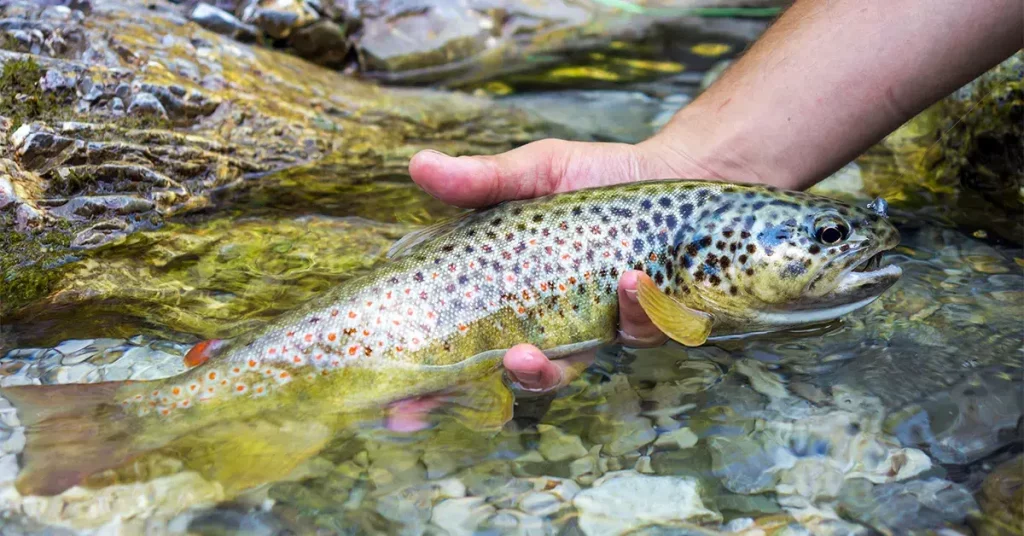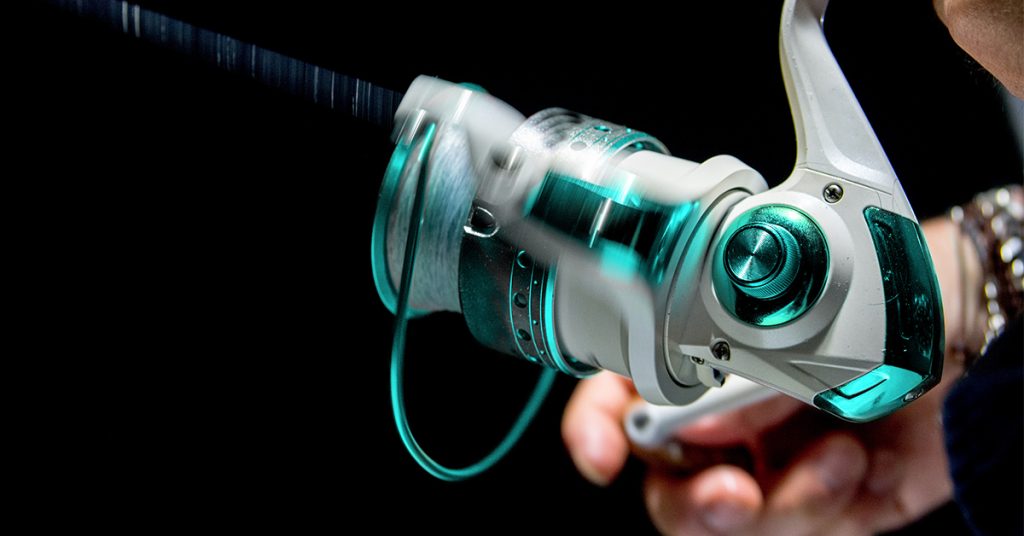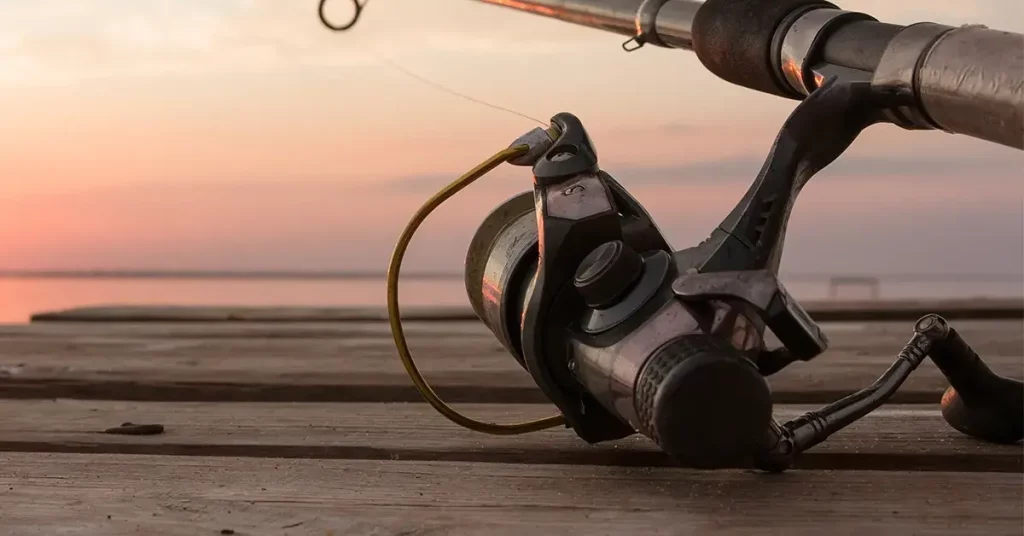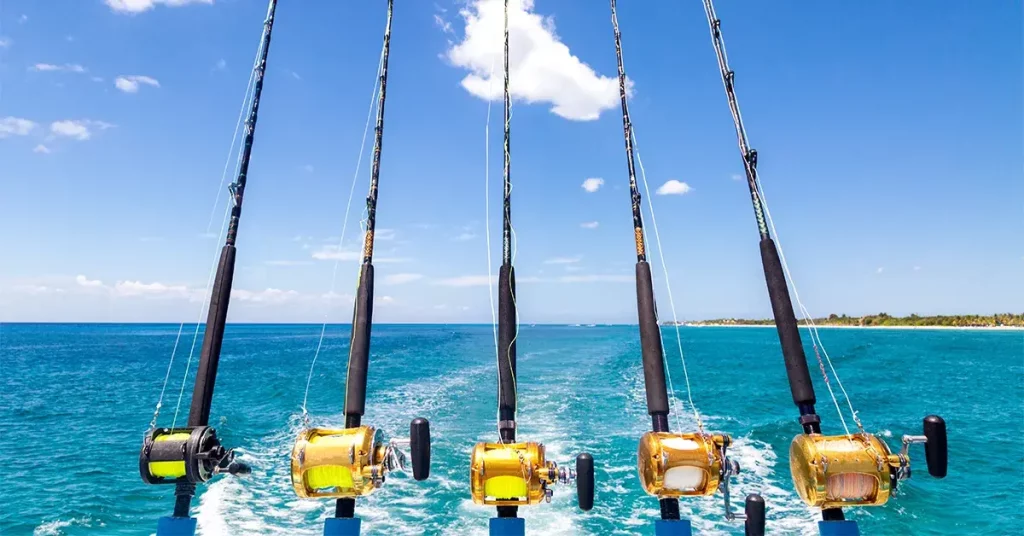Learning to fish for trout is one of those pastimes everyone should have the opportunity to experience. Trout are plentiful in rivers, streams, lakes, and ponds across North America, making them one of the most popular game fish for anglers of all skill levels.
Whether you’re after Brown, Rainbow, or Brook Trout, learning the basics of trout fishing will help you land these incredible freshwater beauties. They’re also some of the tastiest freshwater fish on the planet, so you’ll be rewarded with a tasty meal at the end of the day.
No matter what the species, trout prefer clean moving water, which makes fishing for them in rivers and creeks so productive. Several subspecies spend their lives in larger lakes – including lake trout which can grow into absolute monsters.
In this post, I’ll break down trout fishing for beginners, including techniques, gear, and useful tips to help you catch more trout!
Where to Find Trout?
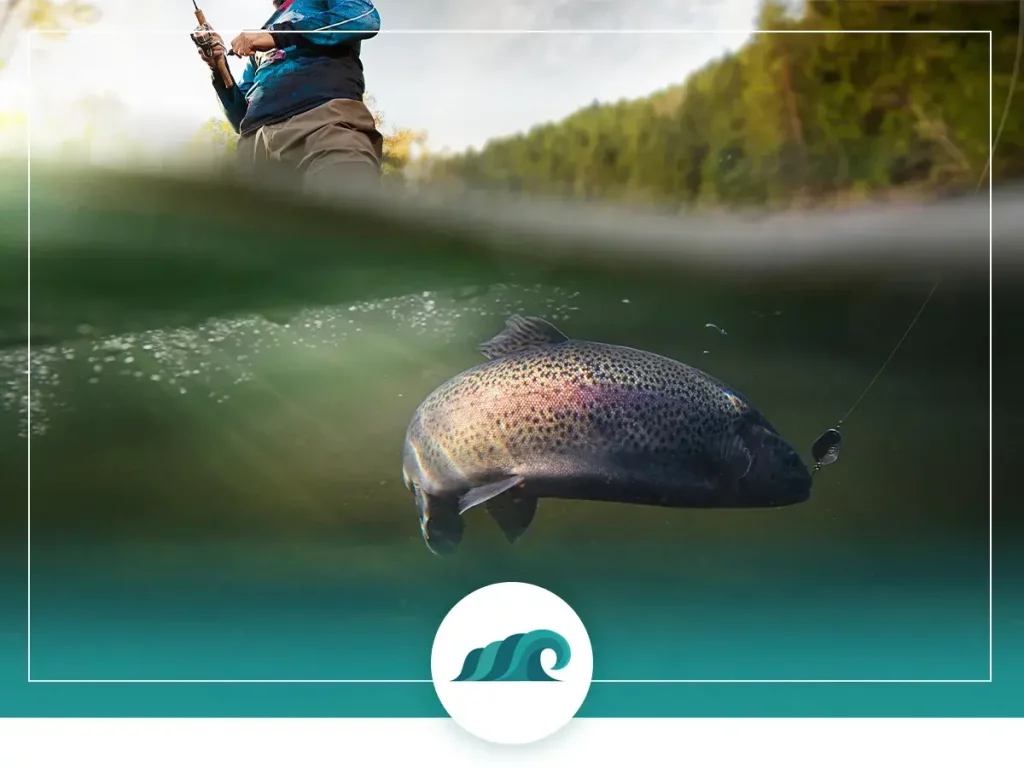
Trout can be found in moving water in streams, rivers, and creeks from coast to coast. They tend to prefer cooler water in the 50 – 60°F range, so mountain streams and alpine lakes can be excellent places to find them.
Trout are one of the most commonly stocked fish in the United States, as they’re fun to catch and will adapt to a variety of conditions. Both wild trout and stocked trout are great to catch, although stocked trout will react to baits differently than their wild cousins – we’ll get to more on that later on.
To find trout near you, check out your State’s fish and wildlife department. They’ll usually have plenty of information on the best trout fishing locations, how to access them, regulations, and where fish are stocked. Other good places to find information are your local bait and tackle shop, and internet forums.
Trout will move throughout a body of water depending on the temperature, current, and level of water clarity. Different species also have their own preferences, so you’ll want to tailor your approach to target your local species.
Rainbow Trout
Rainbow trout can be found in well-oxygenated shallow rivers with gravelly bottoms. They can also be found in moderately deep lakes with access to shallows and vegetation. Lake-dwelling rainbow trout require gravelly bottoms to spawn in order to be self-sustaining.
They tend to live in the fastest flowing water along the river.
Brown Trout
Brown trout can be found in clear, cold, slow-moving water, especially in mountainous areas. They tend to hang out in cover like submerged rocks, banks, and sunken wooden debris. Brown trout use these areas to rest and lay in ambush for prey.
You can also find them in landlocked lakes as well as in sea-going coastal areas. They have the widest distribution of any freshwater predatory fish in the world and can adapt to various water temperatures and conditions.
Brook Trout
Brook trout are found in clear, pure waters within a narrow pH range. They’re sensitive to pollution, pH changes, and temperature fluctuations – which makes them subject to habitat loss and overfishing in certain areas.
Trout Fishing Techniques
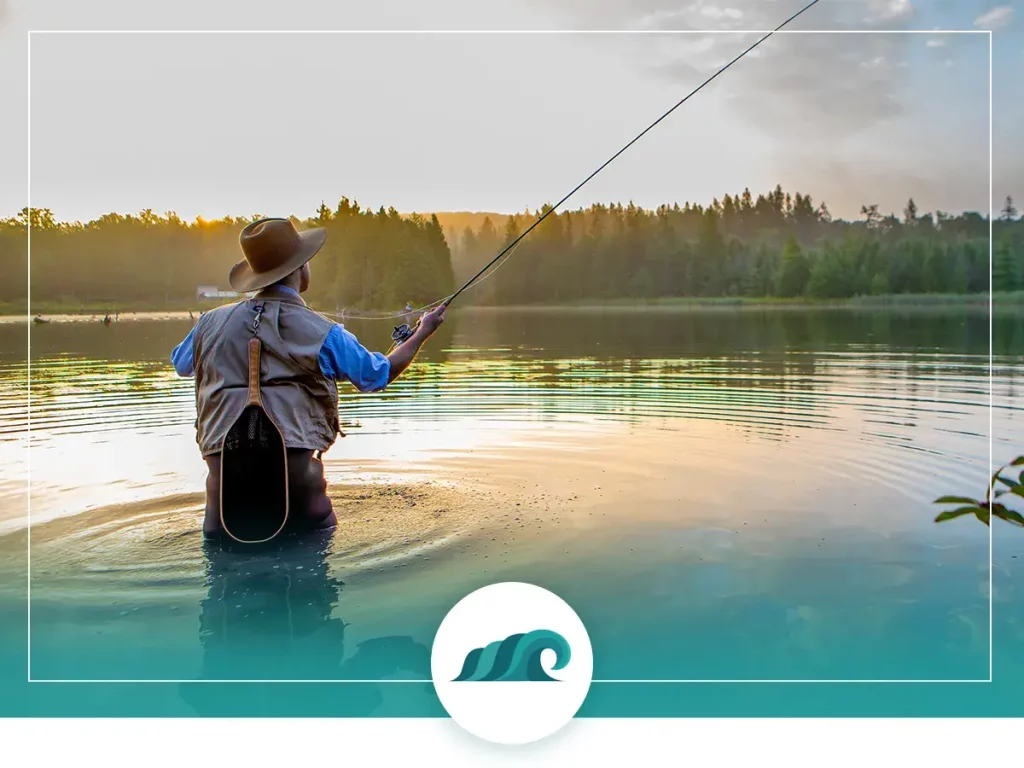
Trout can be caught using several different methods, with fly fishing being one of the most popular. Fly fishing was actually developed for catching trout and has now been expanded for catching many other species.
Beginners to trout fishing may find fly fishing a bit too intimidating. Don’t worry – trout can still be caught with a regular rod and spinning reel.
Drift Fishing
Drift fishing is a highly effective way to catch trout in running water. The technique utilizes the water current to drift your bait naturally.
This makes it especially tantalizing for any trout, but it will generally require you to wade into the water.
Drift fishing requites a bit of practice to get your bait to the right depth, as well as preventing it from getting snagged on the bottom. The goal is to ‘bounce’ your offering near the bottom, creating a realistic-looking presentation.
A bobber with just enough split shot to get it within a few inches of the bottom is all you need to get your bait within a few inches of the bottom.
Float Fishing
Float fishing is another highly effective method of landing trout. As trout tend to be somewhat lazy – and let the current bring their food to them – getting your bait right in front of a trout can be necessary to entice a strike. Float fishing accomplishes this effectively.
This technique works best in light to medium current. You want to cast your float upstream to present a natural offering to the trout. Trout often hide in cover lying in wait for prey, so try to float your bait close to sunken logs, rocks, and near other debris.
Spinners & Spoons
Retrieving a spinner or spoon works well for trout in lakes and ponds, as they tend to hunt more actively in these environments. This technique can also work in rivers and streams – especially in slow-moving pools and oxbows.
A small spinner, spoon, or fly will imitate the trout’s natural prey (minnows, leeches, and insects). Vary your retrieval speed and pattern until you find something that gets the fish fired up.
Trout Fishing Gear
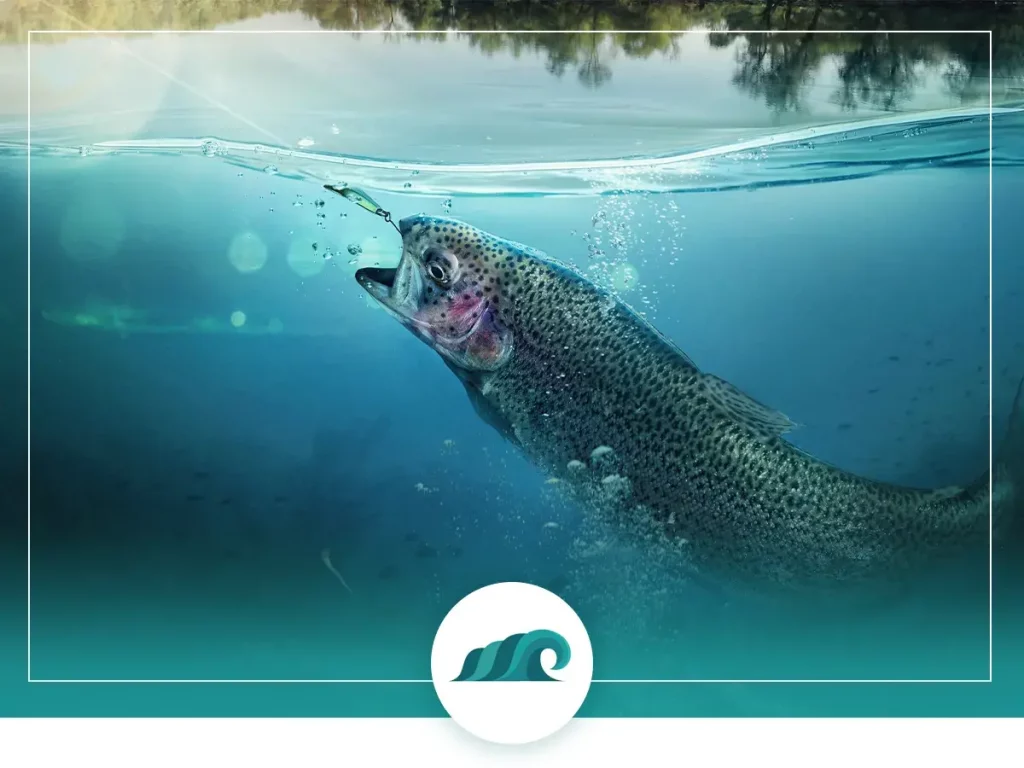
One of the best things about trout fishing is its simplicity – which makes it perfect for beginners.
Unless you want to get fancy, all you really need is an ultralight rod and spinning reel spooled with 4 – 8 lbs mono line.
Trout Rod & Reel
Trout can be a bit finicky, so you’ll want to go with a light touch when it comes to rods and reels. A 5 to 7 foot light or ultralight rod paired with a corresponding spinning reel is the perfect combo for the vast majority of trout.
Check out the St.Croix Trout Freshwater Spinning Rod paired with a Pflueger President Spinning Size 20 Reel for a proven trout catching setup.
Hooks
Trout are notoriously sensitive to fish hooks. The moment they detect something is up with your presentation they’ll spit it out.
This means you’ll need to match the hook size with bait your using. When in doubt go with the smallest hook size. You’ll still be able to catch larger trout with a smaller hook, but small trout will instantly spit out a large hook.
Size 14 through 8 hooks work well for most trout, and you’ll want to make sure you’re using a high-quality hook that will stay razor-sharp.
Fishing Line
While the best fishing line for trout is somewhat subjective, 4 to 6-pound test clear mono line will work well for the majority of small to medium-sized trout. Trout anglers tend to prefer mono over braid due to its elasticity, invisibility in the water, and price.
If you’re after larger 6+ pound river monsters, then 6 to 10-pound fluorocarbon line is the way to go. Fluorocarbon line is invisible in clear water, is highly durable, and has more strength than mono line. It’s also significantly more expensive, but in my opinion is worth the extra expense.
Baits & Lures
Trout can be caught using a variety of natural and artificial baits, as well as spinners, spoons, jigs, and swimbaits. Let’s take a look at some of the best trout fishing lures and baits out there.
Live Bait
Just like with other fish, trout love live bait. Minnows, nightcrawlers, maggots, crayfish, crickets, and other insects can all be highly effective.
While some anglers scoff at using live bait for trout, if you’re trying to actually catch trout, and not just fish for them, live bait is the way to go. Live bait is also great for getting beginners into trout fishing, as they’ll have more luck than with artificial lures.
In muddy, low-viz conditions, live-bait will catch trout when artificial lures don’t have a chance. The fish will still be able to detect your live bait by smell when they can’t see it.
Always check if live bait is prohibited where you plan to fish. In some areas, live bait is banned due to its effectiveness.
Spinners
While they may not look like much, these little lures create a lot of sonic vibration and flash in the water, which works to draw in curious trout. They feature a shiny metal blade that spins freely on the top of a straight-shaft lure body with a treble or single hook attached to the end.
Spinners are not only highly effective, they’re pretty easy to fish with, making them a great choice for beginners. Adding a small piece of nightcrawler or Powerbait to the end of your spinner will often make it even more effective.
Spoons
Spoons are another great option for catching trout in rivers, streams, and larger bodies of water. They create a flash and erratic wobble effect in the water, which kicks in trout’s natural predatory instincts.
Spoons imitate the behavior of an injured baitfish swimming through the water, which creates an irresistible target for any trout in the area. There are a large number of spoon sizes, shapes, and designs, so you’ll want to experiment a little and see what works.
Jigs
If you’re fishing in lakes or ponds, trout will head to cooler, deeper water during the hotter months. A jig can be highly effective for getting down deep where the trout are.
Jigs also work well for trolling in larger bodies of water, and for finessing trout in rivers and streams. Colors that match trout’s natural forage (crayfish, minnows, and flies) work best including yellow, green, and orange.
Powerbait
Artificial bait designed to imitate feed pellets like Powerbait can be highly effective for catching stocked trout. Less so for wild-born trout.
These little balls imitate the look and odor of feed pellets that hatchers trout grow up eating. Just a little ball attached to the end of any lure will enhance your odds of landing a nice trout.
Fly Fishing Gear
While a basic light spinning setup is great for beginners to learn trout fishing, if you’re looking to step up your game, fly fishing is the way to go.
You’ll need more specialized gear to get started with fly fishing. A good started setup will include the following:
- Fly Rod: 9’ to 10’ long.
- Fly Reel
- 5-weight fly line
- Tippets
- Selection of flies including: nymphs, dry flies, and streamers.
- Sling
- Landing Net
Releasing Trout
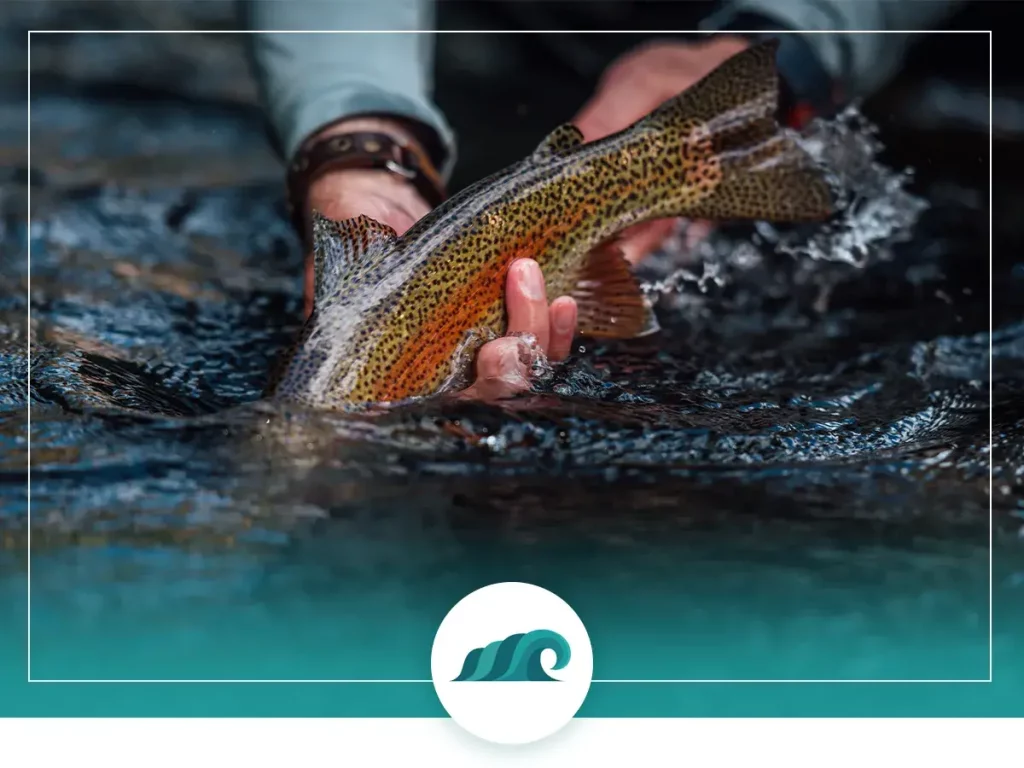
Once you’ve got that beautiful shimmering trout on the end of your line, if you’re not going to keep it, it’s time to let it go. Releasing trout back into the water safely is key to ensuring their long-term survival, so future anglers can enjoy catching them as much as you did.
Here are some tips on releasing trout without harm:
- Use barbless hooks whenever possible. This will minimize injury to the fish, and make dehooking much less stressful.
- Keep your hands wet while handling the fish, or use a rubber-coated landing net. This will minimize damage to the fish’s slime coat, which is comparable to our skin.
- Trout require a lot of oxygen to survive, so try to minimize time outside the water as much as possible.
- Revive the fish in the water before you release it. This means supporting it gently under its belly until it starts to swim off on its own. If it’s struggling to revive, moving it gently back and forth will pass more water through its gills – getting move oxygen into its body.
Hopefully, you now have a better picture of trout fishing for beginners. While some folks find it a little intimidating, there’s really no reason to.
Trout can be caught using a variety of different gear and techniques, so landing your first trout will be easier than you think!

